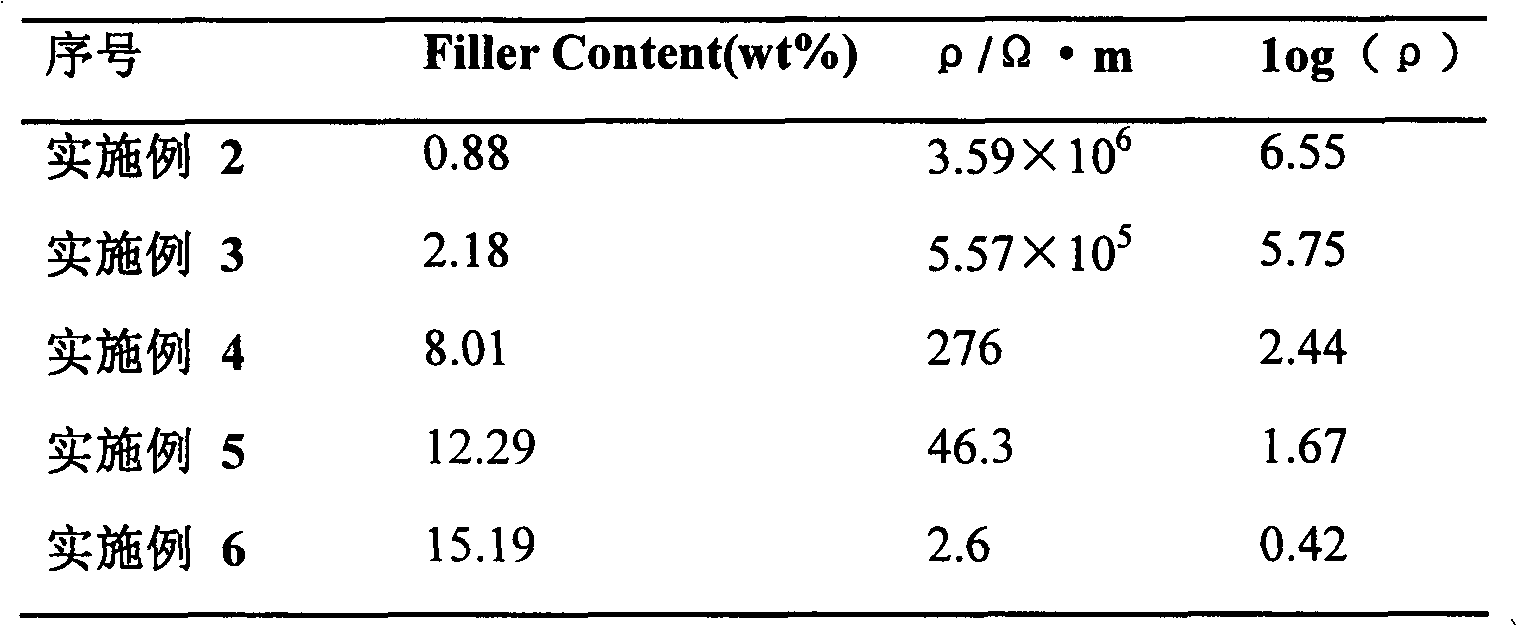Method for directly preparing porous carbon material filling conducting polyester composite material
A porous carbon material and polyester technology, which is applied in the field of preparation of porous carbon material conductive polyester, can solve the problems of high content of conductive filler, increased cost, poor processability and mechanical properties, etc.
- Summary
- Abstract
- Description
- Claims
- Application Information
AI Technical Summary
Problems solved by technology
Method used
Image
Examples
Embodiment 1
[0019] Prepare 400.0 mL of 0.10 mol / L KOH solution, then add 40.0 g of carbon black into the solution, stir at room temperature for 12 h, suction filter, wash, and vacuum dry at 100°C for 12 h to obtain a catalyst.
[0020] Weigh 43.2mmol of bisphenol A and 46.7mmol of diphenyl carbonate into a three-necked flask, add 0.5g of catalyst, and then divide into two reaction stages of transesterification and polycondensation.
[0021] use CH 2 Cl 2 Extract the PC in the product, and then according to "GB / T 1632-93 Polymer Dilute Solution Viscosity and Intrinsic Viscosity Determination", the viscosity-average molecular weight measured by Ubbelohde viscometer is 22803g·mol -1 .
[0022] The obtained product is made into a disc with a thickness of about 1.0mm, and the volume resistivity of the sample is measured by a multimeter to be 1.56×10 3 Ω·m.
Embodiment 2-6
[0024] Under the same conditions, the amount of the catalyst was changed to investigate its influence on the electrical conductivity of the product. The test conditions were the same as in Example 1, and the results are listed in Table 1.
[0025] Table 1 The impact of the conductive filling amount on the conductivity of the sample
[0026]
Embodiment 7
[0028] Prepare 100.0 mL of 0.10 mol / L KOH solution, then add 10.00 g of carbon nanotubes into the solution, stir at room temperature for 12 h, filter with suction, wash, and vacuum dry at 100°C for 12 h to obtain a catalyst.
[0029] Weigh 43.2mmol of bisphenol A and 46.7mmol of diphenyl carbonate into a three-necked flask, add 1.5g of catalyst, and then divide into two reaction stages of transesterification and polycondensation.
[0030] use CH 2 Cl 2 Extract the PC in the product, and then according to "GB / T 1632-93 Polymer Dilute Solution Viscosity and Intrinsic Viscosity Determination", the viscosity-average molecular weight measured by Ubbelohde viscometer is 20181g·mol -1 . The obtained product is made into a disc with a thickness of about 1.0mm, and the volume resistivity of the sample is measured by a multimeter to be 4.14×10 3 Ω·m.
PUM
| Property | Measurement | Unit |
|---|---|---|
| Thickness | aaaaa | aaaaa |
| Volume resistivity | aaaaa | aaaaa |
| Volume resistivity | aaaaa | aaaaa |
Abstract
Description
Claims
Application Information
 Login to View More
Login to View More - Generate Ideas
- Intellectual Property
- Life Sciences
- Materials
- Tech Scout
- Unparalleled Data Quality
- Higher Quality Content
- 60% Fewer Hallucinations
Browse by: Latest US Patents, China's latest patents, Technical Efficacy Thesaurus, Application Domain, Technology Topic, Popular Technical Reports.
© 2025 PatSnap. All rights reserved.Legal|Privacy policy|Modern Slavery Act Transparency Statement|Sitemap|About US| Contact US: help@patsnap.com



